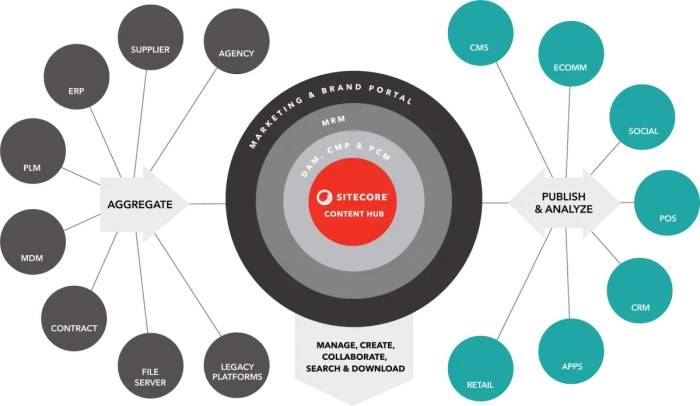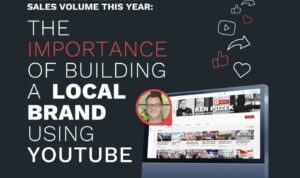Launching a Content Hub is the key to unlocking business potential in the digital age. With a focus on engaging content, strategic planning, and user experience, this guide will take you through the essential steps to create a successful hub that drives results.
Introduction to Content Hub
In the fast-paced world of digital marketing, a content hub serves as a centralized platform where businesses can create, organize, and distribute valuable content to their target audience. This hub acts as a one-stop destination for all relevant information related to a particular industry, product, or service.
By launching a content hub, businesses can establish themselves as thought leaders in their field, build brand awareness, engage with their audience, and ultimately drive more traffic to their website. It allows companies to showcase their expertise, share valuable insights, and connect with their customers on a deeper level.
Examples of Successful Content Hubs
- The HubSpot Blog: HubSpot’s content hub offers a wealth of resources on marketing, sales, and customer service, attracting millions of visitors each month. Their blog posts, guides, and webinars have helped businesses improve their strategies and achieve success in their respective industries.
- Red Bull Media House: Red Bull’s content hub goes beyond energy drinks to deliver thrilling content on extreme sports, music, culture, and more. Their innovative approach to storytelling has garnered a massive following, showcasing the power of engaging and relevant content.
- Adobe’s CMO.com: Adobe’s content hub provides valuable insights and trends for marketing professionals, helping them stay ahead in the ever-evolving digital landscape. With expert articles, case studies, and interviews, CMO.com has become a go-to resource for marketers looking to enhance their skills and knowledge.
Planning Your Content Hub
When planning to launch a content hub, the initial steps are crucial in setting the foundation for success. Identifying your target audience, setting clear goals, and defining objectives are key components to consider.
Identifying Target Audience
To identify the target audience for your content hub, conduct thorough market research to understand who your ideal readers or viewers are. Consider demographics, interests, behaviors, and preferences to tailor your content to resonate with them effectively.
Setting Clear Goals and Objectives
Setting clear goals and objectives for your content hub is essential to measure its success and impact. Define what you aim to achieve with your content, whether it’s brand awareness, lead generation, thought leadership, or customer engagement. Ensure your goals are specific, measurable, achievable, relevant, and time-bound (SMART) to track progress effectively.
Content Strategy for the Hub
Developing a solid content strategy for your hub is crucial to its success. It involves planning, creating, and distributing valuable content to your target audience to achieve your goals.
Types of Content for the Hub, Launching a Content Hub
- Blog Posts: Informative articles that provide value to your audience.
- Infographics: Visual representations of data or information.
- Videos: Engaging content that can increase user engagement.
- Podcasts: Audio content for users on the go.
- Case Studies: Real-life examples of how your products or services have helped others.
Creating a Content Calendar
Having a content calendar is essential for staying organized and consistent with your content creation. Here are some tips to help you create one:
- Identify your target audience and their preferences.
- Set realistic goals for your content creation and distribution.
- Brainstorm content ideas based on your audience’s interests and needs.
- Assign specific topics to each content piece and set deadlines for completion.
- Schedule your content to be released at optimal times for maximum reach and engagement.
Design and User Experience

User-friendly design is crucial for a content hub as it directly impacts how visitors interact with the platform. A well-designed hub not only attracts users but also keeps them engaged, leading to higher retention rates and increased traffic.
Key Design Elements
– Responsive Layout: Ensure the hub is accessible and functional across various devices to cater to a wider audience.
– Clear Navigation: Implement intuitive navigation menus and search functionalities for easy exploration of content.
– Consistent Branding: Maintain a cohesive visual identity through color schemes, fonts, and imagery to enhance brand recognition.
– Visual Hierarchy: Organize content with headings, subheadings, and visuals to guide users through the hub effectively.
– Whitespace: Use ample whitespace to prevent clutter and improve readability, making the content more visually appealing.
Optimizing User Experience
– Personalization: Tailor content recommendations based on user preferences and behavior to enhance engagement.
– Interactive Elements: Incorporate interactive features like quizzes, polls, or comment sections to encourage user participation.
– Fast Loading Speed: Optimize the hub’s performance to reduce loading times and provide a seamless browsing experience.
– Accessibility: Ensure the hub complies with web accessibility standards to accommodate users with disabilities.
– Feedback Mechanism: Collect feedback from users to continuously improve the design and user experience for better engagement.
Content Creation and Curation
Creating original content for your hub is a key element in engaging your audience and establishing your brand’s voice. This process involves brainstorming ideas, researching topics, writing or producing the content, and optimizing it for search engines. The goal is to provide valuable and relevant information to your target audience.
Curating content for your hub involves finding and sharing existing content from other sources that align with your brand and resonate with your audience. This can include articles, videos, infographics, and more. The benefits of curating content include saving time and resources, providing a variety of perspectives, and positioning your hub as a valuable resource in your industry.
To maintain a balance between created and curated content, consider the following tips:
Tips for Maintaining Balance
- Set a ratio: Determine how much original content you want to create versus curated content to ensure a healthy mix.
- Quality over quantity: Focus on creating high-quality original content that adds value to your audience.
- Curate strategically: Choose curated content that complements your brand and fills gaps in your content strategy.
- Engage with your audience: Encourage discussions and feedback on both created and curated content to build a sense of community.
- Monitor performance: Track the engagement and performance of both types of content to adjust your strategy as needed.
and Promotion Strategies: Launching A Content Hub
Implementing best practices for a content hub is crucial for increasing visibility and driving organic traffic. By optimizing your content hub, you can improve its search engine rankings and attract more visitors. Here are some strategies to consider:
Best Practices
- Research: Identify relevant s and incorporate them naturally into your content to improve search engine visibility.
- Meta Tags: Optimize meta titles, descriptions, and headers to make your content more appealing to search engines.
- Internal Linking: Create a network of internal links to help search engines navigate your content and improve ranking.
- Mobile Optimization: Ensure your content hub is mobile-friendly to cater to users accessing content on smartphones and tablets.
Promotional strategies play a crucial role in driving traffic to your content hub. Leveraging social media and other channels can help you reach a wider audience and increase engagement. Here are some tips for promoting your content hub effectively:
Promotional Strategies
- Social Media Marketing: Share your content on platforms like Facebook, Twitter, LinkedIn, and Instagram to reach a larger audience and drive traffic back to your content hub.
- Email Marketing: Build an email list and send out newsletters with links to your latest content to keep subscribers engaged and drive traffic to your hub.
- Influencer Collaborations: Partner with influencers in your niche to promote your content hub and reach their followers for increased visibility.
- Guest Blogging: Write guest posts for other websites and include links back to your content hub to attract new visitors and improve .
Measuring Success and Iterating

Measuring the success of a content hub is crucial for ongoing improvement and effectiveness. By tracking key metrics, analyzing data, and making informed decisions, you can ensure that your content hub continues to meet the needs of your audience and achieve your goals.
Key Metrics to Track
- Website traffic: Monitor the number of visitors to your content hub to gauge its reach and popularity.
- Engagement metrics: Track metrics such as time spent on page, bounce rate, and social shares to understand how users are interacting with your content.
- Conversion rates: Measure the number of leads or sales generated through your content hub to assess its impact on your bottom line.
- performance: Monitor rankings, backlinks, and organic traffic to evaluate the effectiveness of your content strategy.
Analyzing Data and Making Informed Decisions
Once you have collected data on the key metrics, it’s essential to analyze this information to identify patterns, trends, and areas for improvement. By leveraging analytics tools and conducting regular reviews, you can make informed decisions to optimize your content hub.
Importance of Iteration and Continuous Improvement
Iteration is key to the success of a content hub. By continuously analyzing data, gathering feedback, and implementing improvements, you can ensure that your content remains relevant, engaging, and valuable to your audience. Embrace a mindset of continuous improvement to stay ahead of the competition and meet the evolving needs of your users.





